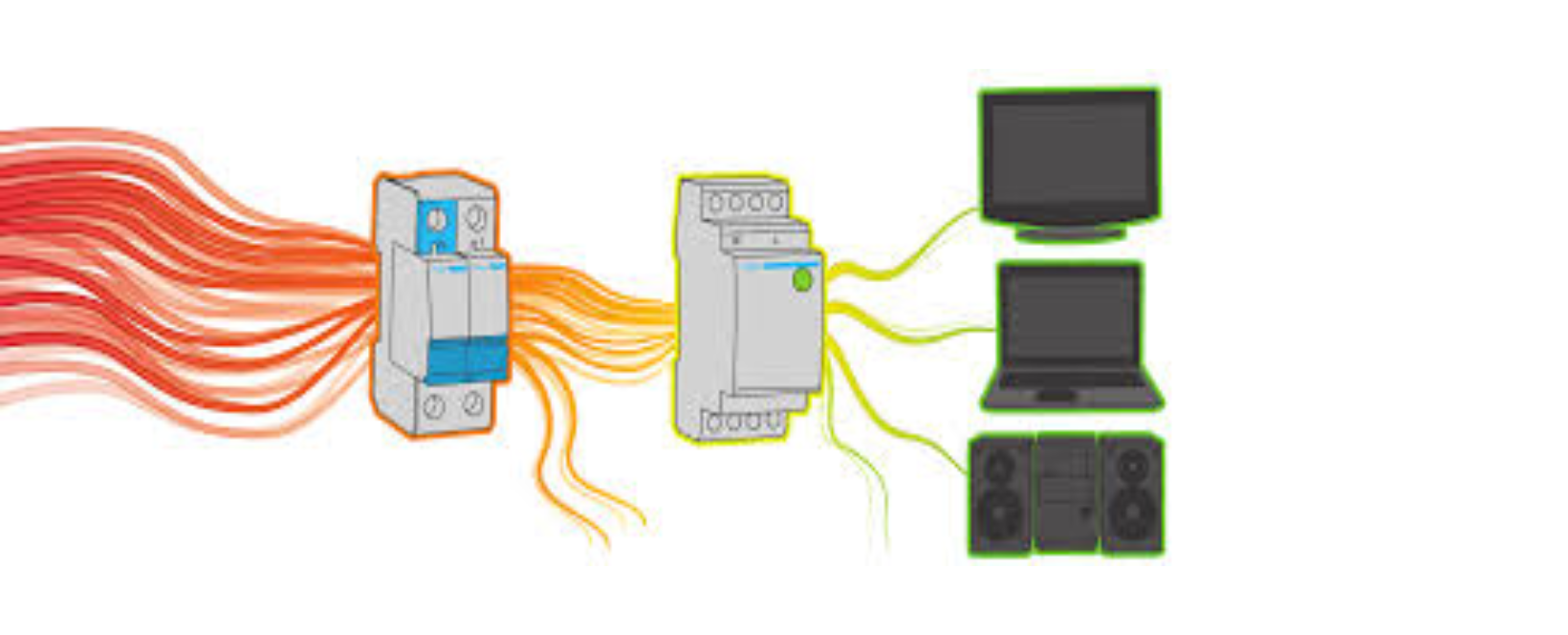What is a surge?
A surge is an increase in voltage flowing through electrical units that rises above standard voltage levels (120 volts). These surges can be caused by lightning, faulty wiring, high-powered electrical devices, or even problems with utility equipment.
Most homes can experience more than 300 potentially harmful electrical surges in a year, so it is important to plug electronic devices into surge protectors rather than electrical outlets in the house. Since electronic devices depend on a constant voltage supply and electrical outlets can experience surges in voltage, electrical outlets are not always the most reliable source of power.
A power surge can flood your home devices with extra electricity and damage them. Surge protectors work as surge protection, protecting your electrical devices from damage.
Surge Protection from Expert Electric:
Jmv surge protection device can help protect your home from voltage surges that would otherwise cause damage to electrical devices. At Expert Electric, we understand the importance of using surge protectors throughout your home. That's why we offer a wide range of residential electrical services designed to help protect your home from power surges.
How Surge Protectors Work:
A surge protector works to protect electronic components from surges by drawing electrical currents from an outlet to pass them through electrical devices plugged into the surge protector. One of the most important components of a surge protector is the metal oxide varistor (MOV), which is designed to divert additional voltage in order to deliver a constant level of power to all devices.
In the event that the MOV indicates high voltage levels it will lower the resistance and if the voltage levels are too low it will create a higher resistance. It's important to note that MOVs can wear out over time, so you should consider investing in a surge protector with an indicator light. This way, you can always tell if the surge protector is working properly.
How Surge Protectors Can Help:
Unlike electrical outlets, surge protectors are specifically designed to help protect electronic devices from power surges and spikes. Surge protectors work to protect electronics by using a system that diverts power above a safe threshold to the protective component, allowing you to ensure that only a safe amount of electricity passes through each device. In most cases, surge protectors are made to look like power strips; however, they are also available in travel size and single exit options.
Where to Use Surge Protectors:
Once you have purchased a surge protector for your home, you will need to determine which devices should be connected to the protector. When making this decision, consider the importance of the device and the sensitivity of its components. Electrical devices, such as computers and televisions, can be very expensive to repair after being damaged by a power surge, while light bulbs can be easily replaced with little expense. Use your best judgment to determine the importance of the device and whether or not you think it should be protected with a surge protector.
How to Protect Your Home With Surge Protectors:
Surge protectors will help keep your electronic devices and yourself safe. If there is excessive electrical flow, the electricity could jump to a nearby person and cause serious injury. Being smart about your protection and safeguarding your valuables can save you from having to buy a new TV or computer after a lightning night.
While we use surge protectors in our home, it is important to have layers of protection. Like a car's metallic design and airbag system, there are layers to protect the person or item behind them.
Whole house surge protectors can be applied to the house breaker panel to protect specific circuits from overloads. For example, if you have an entertainment system on a circuit that requires a lot of electricity to operate, it would be a good idea to connect a surge protector to this circuit at the breaker panel.
This would add a first layer of protection to electronic devices, and if a surge seeps through the first line of defense, the surge protector on the power bar will protect the second. While your home's electrical system is designed to protect you and your valuables, accidents happen when you least expect them.
Choosing the Best Surge Protector for Your Home:
When purchasing a surge protector for your home, it is important to look for a device that has both an Underwriters Laboratories (UL) listing and a transient surge suppressor list. A device with both certifications means that it meets industry performance standards and is rated based on the surge protector’s ability to protect your devices.
How Often Should Surge Protectors Be Replaced:
It is important to note that surge protectors will not last forever as the components used to divert power can begin to wear out over time due to overloads. Surge protectors can only absorb a limited amount of additional energy, so their lifespan depends on the frequency of surges in the area.
In some cases, certain surge protectors will have a light that turns on or off or an audible alarm designed to alert you once the surge protector needs to be replaced.
